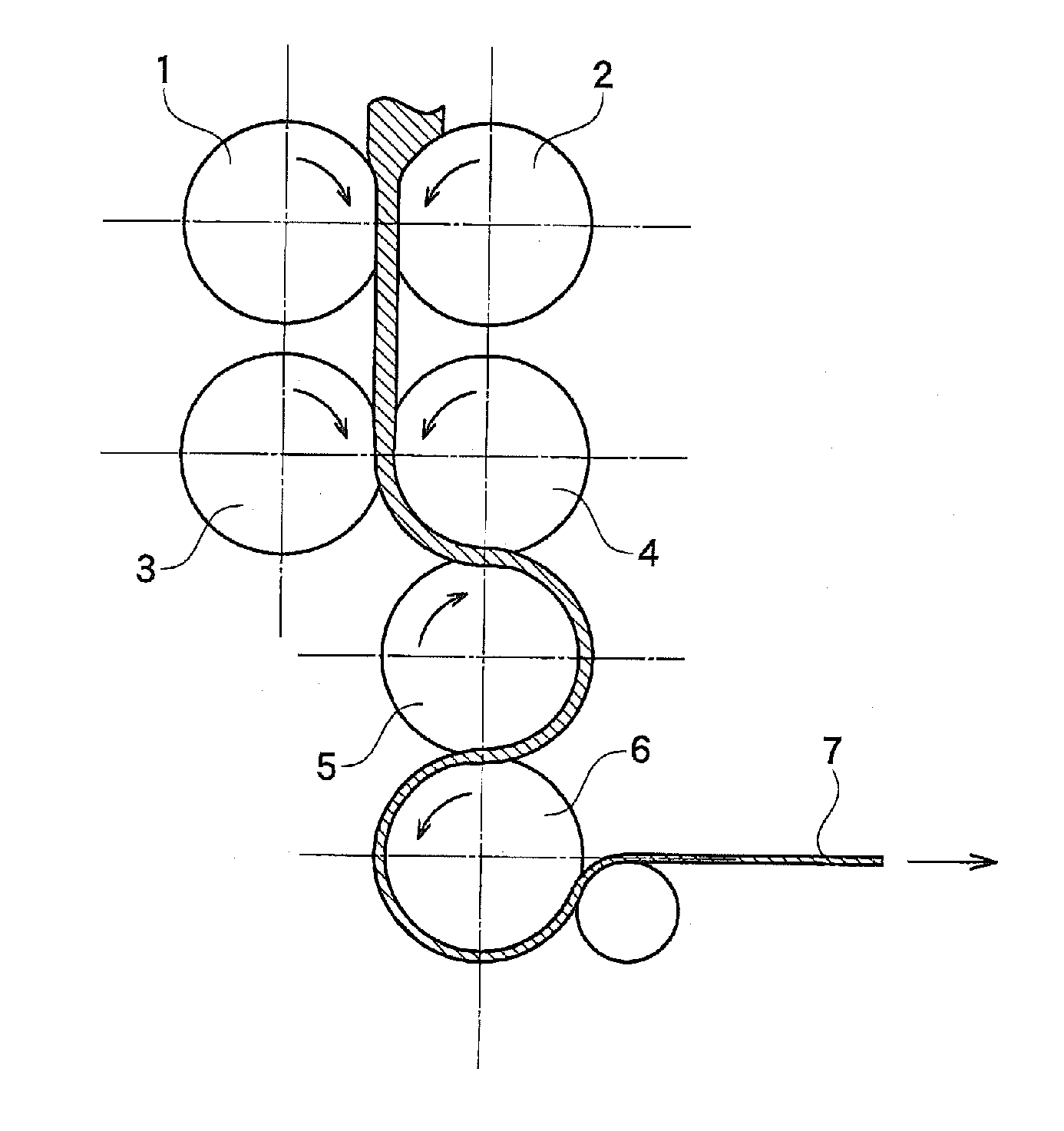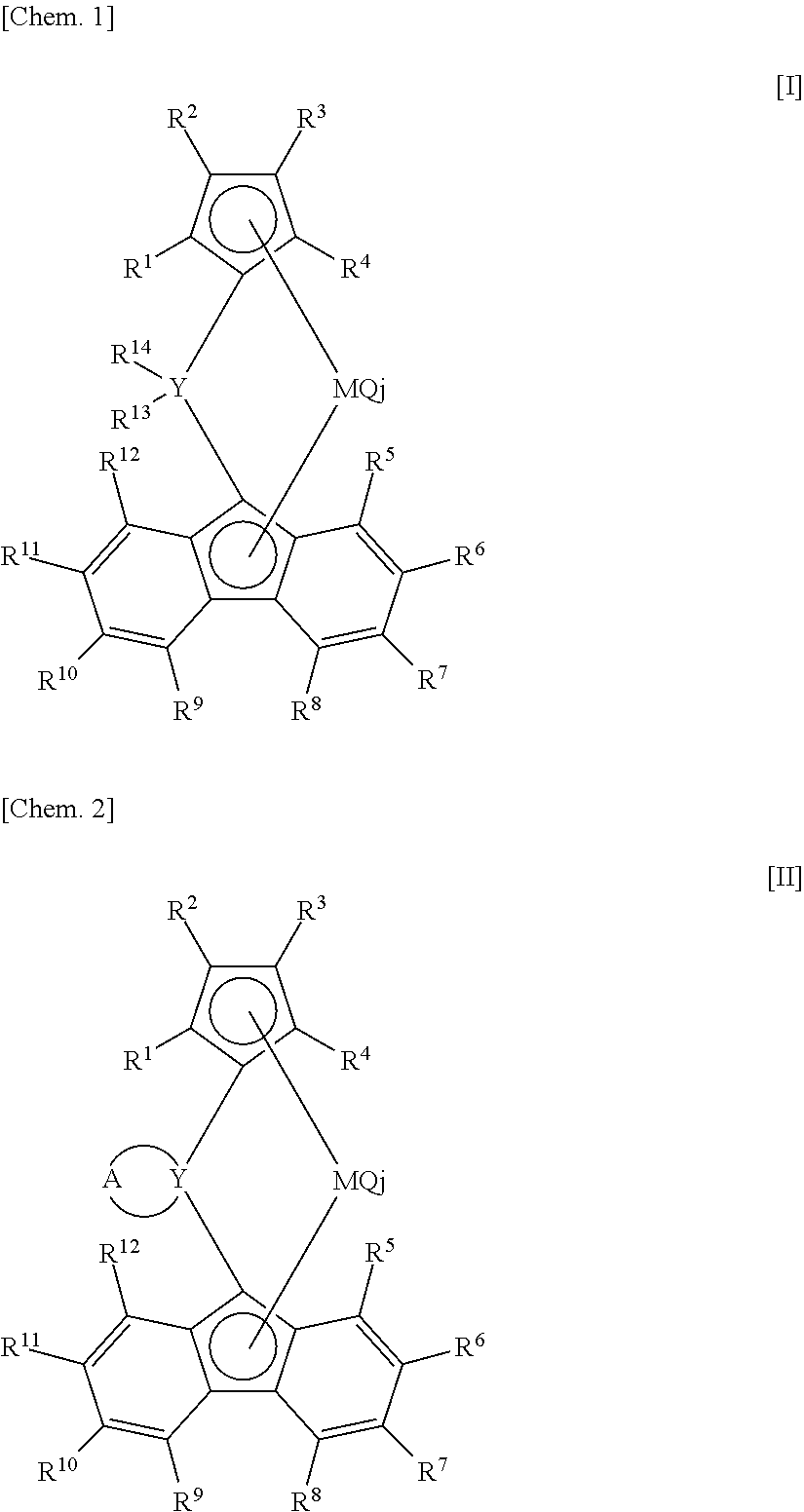Ethylene copolymer, composition including the copolymer, and shaped article and film or sheet formed from the ethylene copolymer or the composition
a technology of ethylene copolymer and composition, which is applied in the field of ethylene copolymer, can solve the problems of marked decrease in shaping processability, processability and extrusion processability, and marked deterioration in mechanical characteristics and rubber elasticity of rubber products obtained, and achieve excellent mechanical characteristics, excellent mechanical characteristics and rubber elasticity. excellent
- Summary
- Abstract
- Description
- Claims
- Application Information
AI Technical Summary
Benefits of technology
Problems solved by technology
Method used
Image
Examples
example 1
[0245]In a 300-L volume polymerizer equipped with a stirring blade, a polymerization reaction was continuously carried out at 60° C. to produce a terpolymer including a component [A]: ethylene, a component [B]: propylene and a component [C]: 5-ethylidene-2-norbornene (ENB).
[0246]To the polymerizer were continuously fed hexane as a polymerization solvent (feed rate: 44 kg / h), ethylene at a feed rate of 4.5 kg / h, propylene at a feed rate of 2.9 kg / h, ENB at a feed rate of 0.55 kg / h, and hydrogen at 0.4 NL / h. While maintaining the polymerization pressure at 1.6 MPa, (t-butylamido)-dimethyl(η5-2-methyl-s-indacen-1-yl) silanetitanium (II) 1,3-pentadiene having a structure represented by aforementioned Formula (VIII) was continuously fed as a main catalyst to the polymerizer at 0.04 mmol / h. Further, cocatalysts, namely, trityltetrakis(pentafluorophenyl) borate [(C6H5)3CB(C6F5)4] and triisobutylaluminum (hereinafter, also referred to as “TIBA”) as an organoaluminum comp...
example 2
[0248]Polymerization was performed under the same conditions as in Example 1, except that the feed rates for ethylene, propylene, ENB and hydrogen were changed. The properties of the obtained ethylene copolymer-2 are described in Table 1.
example 3
[0249]Polymerization was performed under the same conditions as in Example 1, except that the feed rates for ethylene, propylene, ENB and hydrogen were changed. The properties of the obtained ethylene copolymer-3 are described in Table 1.
PUM
| Property | Measurement | Unit |
|---|---|---|
| tan δ | aaaaa | aaaaa |
| molecular weight distribution | aaaaa | aaaaa |
| intrinsic viscosity | aaaaa | aaaaa |
Abstract
Description
Claims
Application Information
 Login to View More
Login to View More - R&D
- Intellectual Property
- Life Sciences
- Materials
- Tech Scout
- Unparalleled Data Quality
- Higher Quality Content
- 60% Fewer Hallucinations
Browse by: Latest US Patents, China's latest patents, Technical Efficacy Thesaurus, Application Domain, Technology Topic, Popular Technical Reports.
© 2025 PatSnap. All rights reserved.Legal|Privacy policy|Modern Slavery Act Transparency Statement|Sitemap|About US| Contact US: help@patsnap.com



